Environmental Sickness: What Hurts The Most?

Relationship Stress & Emotional Pain Often Eclipse The Physical Suffering
By Cesar Collado
As I rolled out the Sickhouses.com website to my network of building science experts, Dr. Joe Spurgeon, a longtime heavyweight and well published thought leader on industrial hygiene, environmental illness expert, diagnostic innovator, and all-around source of wisdom in the environmental illness space gave me a very important reminder. I had asked the experts if there were any topics, they would like me to research and write about. He immediately reminded me that the impact of relationship dynamics is so significant, it warranted that I focus early on these issues in my writing. I thought there was great wisdom on discussing “what hurts the most?”
I cannot disagree. In almost every conversation I have with the experts and patients, the impact on the family, relationships, and emotional toll on the family is always mentioned. Family members often complain when the topic of financing the repairs to home and medical expenses. The emotional toll on the patient and family is often the most painful consequence of the illness. In fact, when I speak with building science professionals and product companies working in the mold or environmental ill ness space, empathy is a key attribute I look for and admire. I have even helped sick patients write descriptive letter explanations to spouses and families explaining the science and medicine behind their illness. To some, the mental toll of brain fog and other cognitive issues make a focused and balanced discussions almost impossible. This happens often. I always recommend communicating in writing using articles and explicit letters if they cannot orally frame the complex issue clearly.
ness space, empathy is a key attribute I look for and admire. I have even helped sick patients write descriptive letter explanations to spouses and families explaining the science and medicine behind their illness. To some, the mental toll of brain fog and other cognitive issues make a focused and balanced discussions almost impossible. This happens often. I always recommend communicating in writing using articles and explicit letters if they cannot orally frame the complex issue clearly.
Patients with debilitating symptoms from the mold or chemical toxins describe that the physical pain takes a back seat to family dynamics when they are describing the illness to me. Mold sufferers often vividly share the resentment and anger that can build over time with family members who live in the home. Why is this an issue with environmental illness? The problem lies in the framing of the problem facing the family. Not only is medical help needed, but significant changes in family behaviors and significant home investments often follow. Other issues such as diet and activities also impact the entire family. When a home is newly built, they cannot understand that New Homes Have As Many Problems As Old Ones.
Some people are genetically susceptible to mold illness. Statistically, approximately one in four have the HDL-RA genetic defect associated with mold sensitivity. The odds that any individual will get sick are usually much smaller because an intense exposure or long-time slow exposure is required for this to occur. The core of the issue is that other members in the same household do not develop the same illness while being exposed to the same allergens or toxins. Exposure to chemical toxins, heavy metals, or gases will impact everyone the same. Lack of empathy, belief, or dismissal of the severe symptoms can be attributed to self centeredness, where some people do not recognize pain beyond their woes experience. Resentments can also grow as a result of the financial impact to the family or the loss of a second income supporting the home. The list goes on.
Complex Diagnosis Amongst Many Chronic Illnesses
Experiences during the path to a diagnosis is complicated for all as many symptoms of environmental illness mimic several other chronic diseases. Some people receive a “diagnosis of exclusion” meaning that doctors will rule out disease candidates one at a time. Examples of diagnosis of exclusion include major depressive disorder, chronic fatigue syndrome, headaches, migraines and other neurological or cognitive dysfunction. This means that the patient may be getting different diagnosis from different medical specialties, and multiple treatment regimens will be endured serially over a long period of time. It can take years to decades for patients to be finally be diagnosed, air pollutants resolved and relief is found when the home issues are addressed and there is time to heal.

Unfortunately, the burden of considering environmental illness falls on families and can cause significant insecurity due to a lost second income, medical expenses, and repairs or remediation expenses. Financial issues are a common cause for couples to have relationship problems. Forced budgeting, credit card debt, prioritization, and sacrifice is required for most families living in this country. Unfortunately, a family’s emotional wellbeing during a health crisis can take the debilitating symptoms to an entirely new level of suffering. Family tension coupled with financial insecurity added to chronic illness is overwhelming for the entire family, and, guilt can be consuming for any parent who might not be unable to remain active or spend time with a spouse or children.
Here are a few vivid examples from discussions with patients, physicians, and environmental illness professionals over the past several years that illustrate severity and impact environmental illness has on a family.
To summarize, once an individual person reaches their “Toxic Load”, the person can become ultrasensitive and symptomatic after every environmental or chemical exposure. It is also not uncommon for patients to also become “Chemically Sensitive”.Perfumes, fragrances, cleaning products, or the off gassing of chemical coatings such as flame retardants on furniture and new furnishings can contribute to debilitating symptoms and illness. This makes a proper diagnosisand treatment for patients and homes more complicated, often expensive, and time consuming.
Finding a “Safe” Place
Most physicians recommend moving temporarily to a safe place. Moving to a completely different location away from their current home for a period of time is a very simple and telling diagnostic solution. It is always helpful to address the situation with as many facts as possible. I recommend ImmumoLytics mold test plates to test the home. ImmunoLytics provides the most comprehensive mold testing kit with clear instructions and the ability to send the mold testing plates to their lab for analysis. You can just do a visual test or send them in for results. The result package provides lots of information about the findings. Environmental professionals usually use a qPCR test which is much more precise, but significantly more expensive. Petri dishes are still a Gold Standard used in research labs everywhere, so having the knowledge of a positive mold test early in the process can streamline medical treatment and home repair to minimize the human costs.
If the patient feels better away from their homes, it becomes more probable and understandable that the homes may be the cause. Unfortunately, patients have given me numerous examples were staying with relatives or friends while chronically ill may only work for a finite period. One patient vividly described how her stay with her sister became “imposing” and she was told that she outwore her welcome. It is difficult to be a guest in someone else’s home while being severely ill and may require special requests regarding behaviors and exposure in the home. As a result, she described having to make a hasty and poor decision to move back to her home to pacify her sister and brother-in-law who didn’t understand the critical nature of her situation. They felt imposed and the relationship became “strained”.
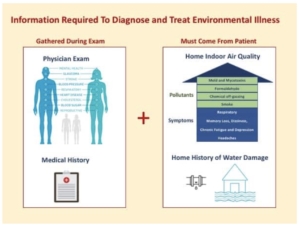
Hotels, especially the moderate priced hotels, are not a good alternative! Hotel rooms often have severe mold problems due to the construction, design, inexpensive building materials, furnishings, and the fluctuating temperatures in rooms with occupant-controlled A/C. Because many hotel chains, including premium properties continue to use vinyl wallpaper that doesn’t breathe, the result is the trapping of moisture between the wallpaper and drywall. Hotels can be very moldy places.
Finding Physicians Who Clearly Understand
I have found that many of the Medical Doctors, Osteopathic Doctors, and integrative medicine specialists, who treat environmental illness, have experienced environmental illness in their families and trudged through the diagnosis, treatment , and home solution with the help of other physicians and professionals. In my opinion, these physicians, who either had environmental illness or who had a family member who suffered, seem to be the most empathetic and become very passionate practitioners of Environmental Medicine. I often listen to podcasts on environmental illness while at the gym. It is extremely common to hear many expert’s personal stories that fit this description. I recommend ‘Googling’ environmental medicine in your city or zip-code to shorten your search. Feel free to call the practice to ask questions. These practices spend much more time (often an hour) per patient visit because the patient history and lifestyle is essential to finding clues that the home may be the cause. Asking a patient if the home has experienced water damage, leaks, or flooding can be critical to consider the home as the cause.
Environmental Illness Has Resulted in Many Divorces
Several professionals have shared that environmental illness leading to divorce is not an uncommon situation they witness with their customers. I personally know a retired physician (MD) who had successfully treated 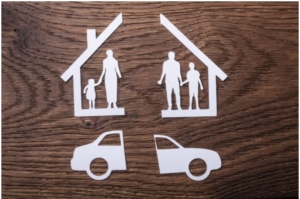 environmental illness for decades. The physician described that her debilitating symptoms were caused by a newly built, custom, “dream” home. Over time, she became very ill. Once the physician/patient identified that it was their home causing the illness, the physician proactively moved out of the home and relocated to a safe place to get well. Once wellness was achieved, her husband made it clear that he was not leaving their “dream home” that they had built with pride and a substantial investment. In this case, one spouse chose the home over the marriage. Alternatively, the other spouse chose wellness over the marriage. Unfortunately, divorce was the end solution.
environmental illness for decades. The physician described that her debilitating symptoms were caused by a newly built, custom, “dream” home. Over time, she became very ill. Once the physician/patient identified that it was their home causing the illness, the physician proactively moved out of the home and relocated to a safe place to get well. Once wellness was achieved, her husband made it clear that he was not leaving their “dream home” that they had built with pride and a substantial investment. In this case, one spouse chose the home over the marriage. Alternatively, the other spouse chose wellness over the marriage. Unfortunately, divorce was the end solution.
The Long, Slow Decision
I have exchanged numerous email correspondences when patients have reached out to me. We eventually speak on the phone where they can ask for some personal advice regarding mold illness. In some cases, the patients had already given up trying to convince their spouses to make changes to improve their health situation. Options to move to a new house or spend a substantial amount of money to remediate and fix the home may never be seriously considered.
Sick patients describe an unending conversation that usually ends in conflict. Significant resentments are seeded and watered. The topic of mold will continue to be trigger for arguments. In particular, the spouse that is not affected by mold and believes mold health treatment and home remediation seem to be too significant of expense. Sometimes, a home may require remediation measures across the structure, crawlspace/basement, HVAC, and outdoor water management, all of which can add up to very high costs. Unfortunately, addressing mold without eliminating the cause of the moisture problem usually results in short lived results.
Sometimes patients in this predicament can be suffering for years, or in some cases, decades. In one particular case discussed , a patient had seen numerous (“double digits”) physicians over many years with no success. They had undergone numerous regimens of medicines with no success. Of course, they also experience the adverse events that come with the medications. Antidepressant and anticonvulsant medicine are often used and can have adverse effects that may be as bad as the disease symptoms. In this case, it took over a decade of searching and multiple medication regimens to come to a conclusion that would lead to wellness. This change occurred when they finally realized that their only option left was to fully remediate the home and make an investment in their environment.
I once accompanied a Bau-Biologist on an inspection where the mother, a homemaker was environmentally ill. She was also home schooling three children. She described several common events where she had memory loss while running errands and suffered crippling headaches. She would get lost in her own neighborhood. She had also been falling behind with her children’s studies. The husband then showed up late to the inspection, took over, and assured us that he will DIY all issues with the home. Without antagonizing the husband, it became clear that his perception of the weight of the issue was very different than his wives. I never found out what inevitably happened in this particular case.
Identifying and verifying the issues with the home can keep the focus away from emotional discussion debating the illness versus one based on facts and solutions. Remembering the situations where the patients (and families) find wellness and treatment is successful, it is rewarding to everyone involved.
College Dorms Almost Kill a Child
Just a couple of years ago, I was attending an evening dinner event at a conference There, I entered into a friendly conversation with the daughter of my team member. While describing the environmental illness “space” where I focus my work, the daughter insisted I sit down with her and both of her parents. The parents went from initially being very polite to becoming very captive in the discussion.
They went on to describe the 2-year journey they recently completed. They described how their son became extremely sick while staying in college dorms. These dorms were inside a very prestigious university with traditional gothic stone structures built in the early 1900s. The son was sent to a variety of physician specialties at the school, a top medical institution. The parents lived in NY and had the ability to pursue every possible medical solution. The son had to endure countless endoscopies, colonoscopies, medicine regimens (expensive biologics), CTs, and MRIs, without any success. After the first year of seeking wellness through new treatments, the parents had the opportunity to visit his small, shared, dorm room. The mother immediately smelled the mold and brought in an expert to further investigate. They had the dorm room tested and identified the specific toxic mold species that was making him ill.
Their immediate solution was to immediately move their son out of the dorms and find him an apartment without mold. He eventually had to drop out of school and move home to seek wellness because school was not viable with the debilitating symptoms. After a very long time (over a year) and the help of an integrative medicine physician who provided a strict diet and nutritional supplements, their son finally got better. Both parents then described in detail all of the treatment modalities and costs they incurred during the 2-year ordeal. While they had adequate financial security and insurance to cover medical costs, the family still paid for coinsurance costs and expensive medication copays (>$3K/mo.), and an extra year and a half of college tuition and costs (>$75K).
The mother described her primary frustration was driven by the misery her son endured and his inability to enjoy the “college years.” During our discussion, they asked that I explain how I found myself in this unusual career change. I explained that environmental illness is a true unmet medical need where traditional medicine has not been effective in either identifying the illness or treating the patients. I also explained that diagnosing the home is not perceived as a normal activity that primary care physicians should be concerned. The reason is primarily because of a physician’s aggressive schedules and limited time per patient. They do not have time to even raise the topic. Further, it is perceived that finding solutions outside their scope of influence is not part of their medical training, so is not something that they should do.
Most important to me, I could not envision how the pharmaceutical industry would pursue a pharmaceutical treatment for environmental illness. Any medicinal treatment would not address the cause the illness. As long as the air occupants breath remains polluted, a patient cannot heal properly. Their immune system will always be active. Also, if medical treatments were available in the future, pharmaceutical pricing may not make any true innovation easily available to patients.
My current work and relationships with the doctors, mold professionals, and building science professionals and patients inspire me to empower patients and their families to consider their environment and air when severely ill. Fortunately, environments can be tested early and inexpensively when an illness becomes symptomatic. Early diagnosis could save countless diagnostics and treatments from numerous physician specialties. Unfortunately, with environmental illness, the sick individual and their families shoulders most of the responsibility in identifying environmental illness as the cause of chronic illness. Today’s medical ecosystem does not include standard investigation of home living conditions.
Patients must be proactive and participate in identifying the cause and location of the mold or toxins and must also find a doctor or integrative medicine physicians and/or other experts. This is a very tall order! SickHouses has been created to provide as much useful information possible to help environmentally ill patients and their families to identify, fix or avoid moldy or toxic homes during the home buying process.
About SickHouses
Sickhouses.com will provide regular informative articles on the various aspects of environmental illness and “project management” suggestions to address and balance medical and home repair efforts. Over time, expert referrals will continue to be added. This could make a significant impact with home purchasers who require IAQ in order to get well. By understanding red flags and the professionals required to fix the issues, they can avoid a home sickness nightmare.
It can become important to introduce wellness into the realtor relationship. Families with chronic illness should consider avoiding realtors who minimizes or ignore health and wellness issues when purchasing new homes. This process will add additional diligence in the buying process that may not be welcome. We need real estate professionals to understand the “sick” client and their needs. Buyers and realtors can learn how to look for “red flags” and develop a network of professionals to improve the situation. I am fortunate to have found local realtors in Atlanta who believe in this effort and environmental professionals who support the notion of avoiding buying SickHouses. These professionals are very dedicated to getting patients well and understand the other issues described in this article. The have unanimously endorsed their preference would be to get involved early in the process so environmental illness sufferers can avoid the physical, emotional, and financial pain.


 Mold takes a while to get a foothold, but maintenance can be a short-term solution or even a longer term solution for people who rent and may not have a choice. Systemic fogging also provides valuable information regarding symptoms, the source of the mold, home leakages identified where the fog escapes, and retesting the home after you fog. Time can also help a home owner to manage their financial alternatives and possibly prevent “scope creep.” This can occur when less experienced mold remediators who are also general contractors suggest more remodeling in the remediation than necessary. this can drive costs up significantly. In addition, when using a remediator who is not grounded in building science and mold expertise, mold will often reemerge in the remodeled home.
Mold takes a while to get a foothold, but maintenance can be a short-term solution or even a longer term solution for people who rent and may not have a choice. Systemic fogging also provides valuable information regarding symptoms, the source of the mold, home leakages identified where the fog escapes, and retesting the home after you fog. Time can also help a home owner to manage their financial alternatives and possibly prevent “scope creep.” This can occur when less experienced mold remediators who are also general contractors suggest more remodeling in the remediation than necessary. this can drive costs up significantly. In addition, when using a remediator who is not grounded in building science and mold expertise, mold will often reemerge in the remodeled home. outside. Mold can exist in home walls and floors while being dormant. It is impossible to remove all mold from a home. When it dries naturally within a day, it can simply becomes dormant until new moisture reactivates it again. Mold plays an important role as part of the normal decaying process in nature. We all see it outdoors, in our bathrooms, and other places inside and outside our homes. This is normal and we accept it.
outside. Mold can exist in home walls and floors while being dormant. It is impossible to remove all mold from a home. When it dries naturally within a day, it can simply becomes dormant until new moisture reactivates it again. Mold plays an important role as part of the normal decaying process in nature. We all see it outdoors, in our bathrooms, and other places inside and outside our homes. This is normal and we accept it.
 business and as a necessary training tool for fire fighters, military, and other rescue professionals. Hot fogging has also been adopted by the pharmaceutical industry, hospitals, and food production, and manufacturing for cleaning. Hot fog is cost and time effective when cleaning and sanitizing hospitals, clean rooms for manufacturing electronic components, and research labs. Fogging is also used with large scale food production equipment. Prior to fogging, instruments would need to be disassembled after each use which is time consuming, expensive, and created opportunity costs.
business and as a necessary training tool for fire fighters, military, and other rescue professionals. Hot fogging has also been adopted by the pharmaceutical industry, hospitals, and food production, and manufacturing for cleaning. Hot fog is cost and time effective when cleaning and sanitizing hospitals, clean rooms for manufacturing electronic components, and research labs. Fogging is also used with large scale food production equipment. Prior to fogging, instruments would need to be disassembled after each use which is time consuming, expensive, and created opportunity costs.
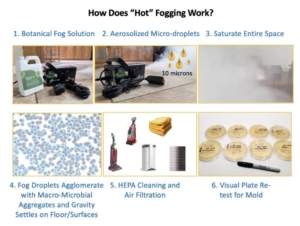
 A HEPA vacuum will remove virtually all of the biological debris and particles. (Note: it must be a HEPA Cannister vacuum designed for this purpose or an upright vacuum with HEPA specially designed bags.)
A HEPA vacuum will remove virtually all of the biological debris and particles. (Note: it must be a HEPA Cannister vacuum designed for this purpose or an upright vacuum with HEPA specially designed bags.) The HavenMister by BioBalance is the smaller quality fogger that is an effective misting alternative that will weighs in at less than 7 lb. and can easily be maneuvered.
The HavenMister by BioBalance is the smaller quality fogger that is an effective misting alternative that will weighs in at less than 7 lb. and can easily be maneuvered.

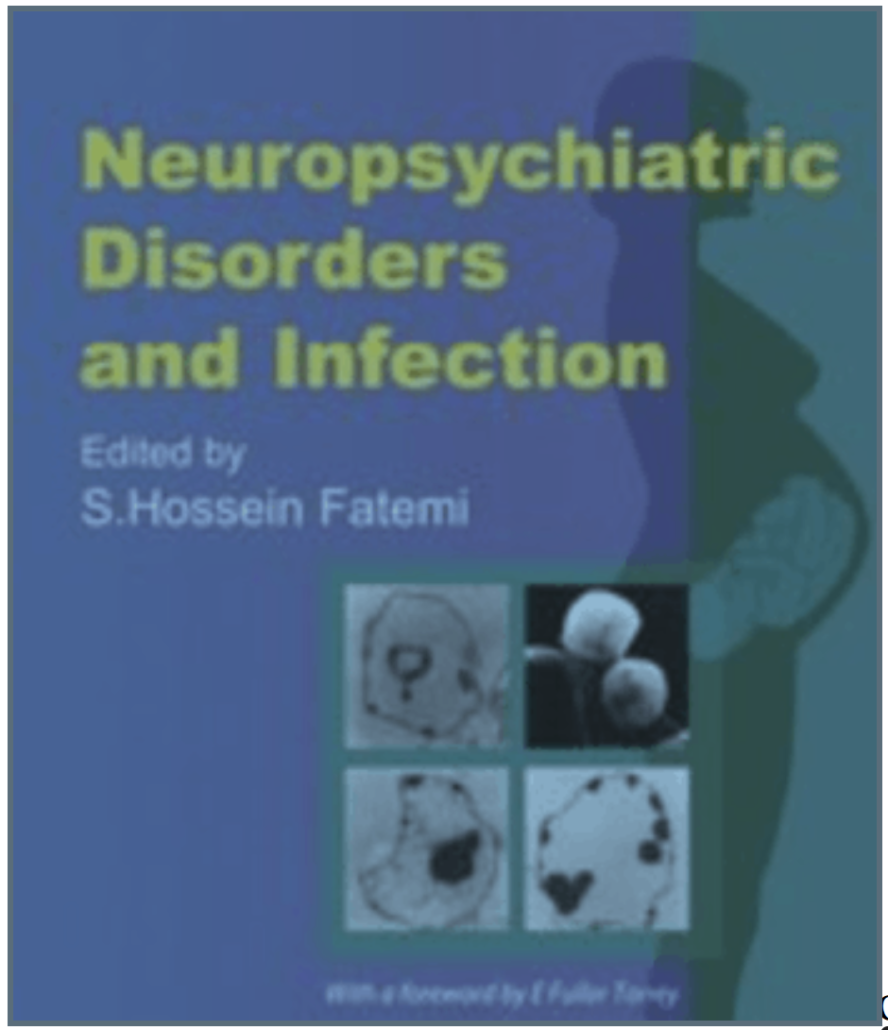










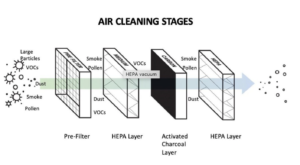










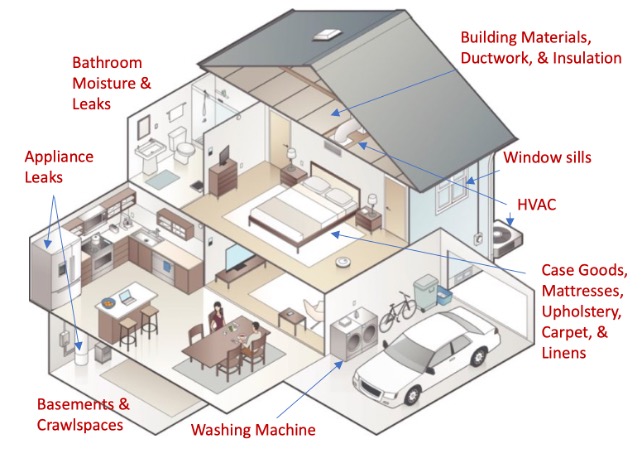








 Since the majority of mold is inhaled, the largest concentration of mycotoxins exists in the sinus mucosal tissue. Currently, there are no diagnostics to test for mycotoxins in the sinuses. Because the sinuses reside adjacent to the cerebral spinal fluid around the brain, direct exposure to the brain can cause significant neurological symptoms without being detected in a urine test for mycotoxins. I know of few cases where ENTs have removed damaged tissue from the sinuses during surgery and have tested that tissue for mycotoxins after the procedure (similar to a cancer biopsy). This is NOT the norm for most ENTs I have encountered, though. In fact, I only know of one who has embraced this practice. Most ENTs refer patients with neurological symptoms to a neurologist.
Since the majority of mold is inhaled, the largest concentration of mycotoxins exists in the sinus mucosal tissue. Currently, there are no diagnostics to test for mycotoxins in the sinuses. Because the sinuses reside adjacent to the cerebral spinal fluid around the brain, direct exposure to the brain can cause significant neurological symptoms without being detected in a urine test for mycotoxins. I know of few cases where ENTs have removed damaged tissue from the sinuses during surgery and have tested that tissue for mycotoxins after the procedure (similar to a cancer biopsy). This is NOT the norm for most ENTs I have encountered, though. In fact, I only know of one who has embraced this practice. Most ENTs refer patients with neurological symptoms to a neurologist. It is a significant challenge to even find ENTs who treat fungal sinusitis other than surgical removal of “fungal balls.” I receive numerous accounts of patients seeing ENTs for mold without success or frustrated with the outcome. It is also rare for an ENT or any specific specialist to treat the body in an integrative manner. This is no fault of theirs as the specialty that they are licensed to practice is very focused. The burden to find such doctors falls on the patients.
It is a significant challenge to even find ENTs who treat fungal sinusitis other than surgical removal of “fungal balls.” I receive numerous accounts of patients seeing ENTs for mold without success or frustrated with the outcome. It is also rare for an ENT or any specific specialist to treat the body in an integrative manner. This is no fault of theirs as the specialty that they are licensed to practice is very focused. The burden to find such doctors falls on the patients.

 When exposed to toxins, our livers and kidneys are somewhat effective in metabolizing them and removing them via the digestive and perspiration systems. However, if the amount of toxins exceeds the body’s ability to rid itself from them, they can be stored in fat and tissues. This is particularly important for those of us that carry little or significant excess fat. When we lose weight, these toxins are released into our bodies where they will continue to be circulated, absorbed, metabolized and excreted. In the event toxins reach organs or even the brain by penetrating the blood brain barrier, devastating disorders, including neurological and cognitive problems can result.
When exposed to toxins, our livers and kidneys are somewhat effective in metabolizing them and removing them via the digestive and perspiration systems. However, if the amount of toxins exceeds the body’s ability to rid itself from them, they can be stored in fat and tissues. This is particularly important for those of us that carry little or significant excess fat. When we lose weight, these toxins are released into our bodies where they will continue to be circulated, absorbed, metabolized and excreted. In the event toxins reach organs or even the brain by penetrating the blood brain barrier, devastating disorders, including neurological and cognitive problems can result.





